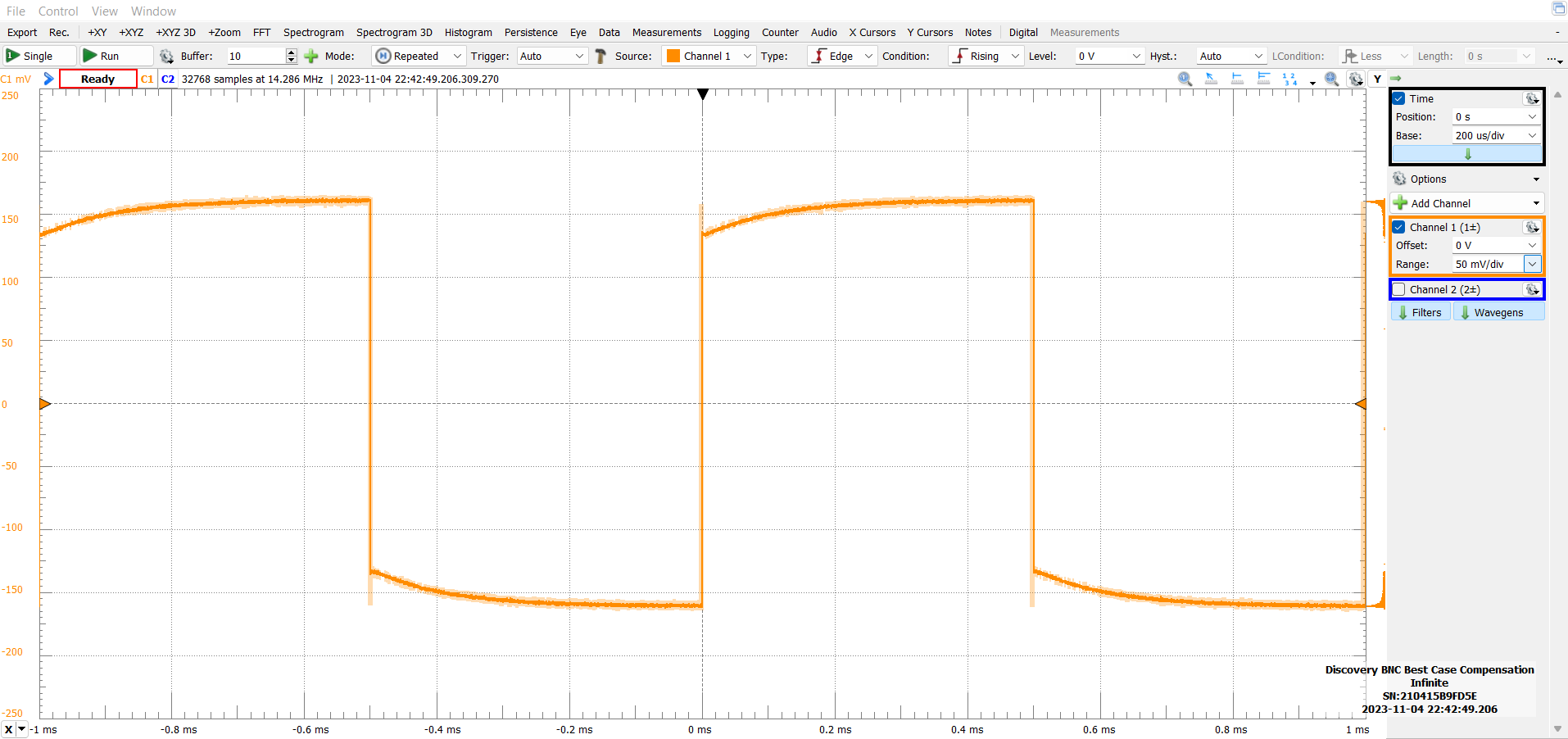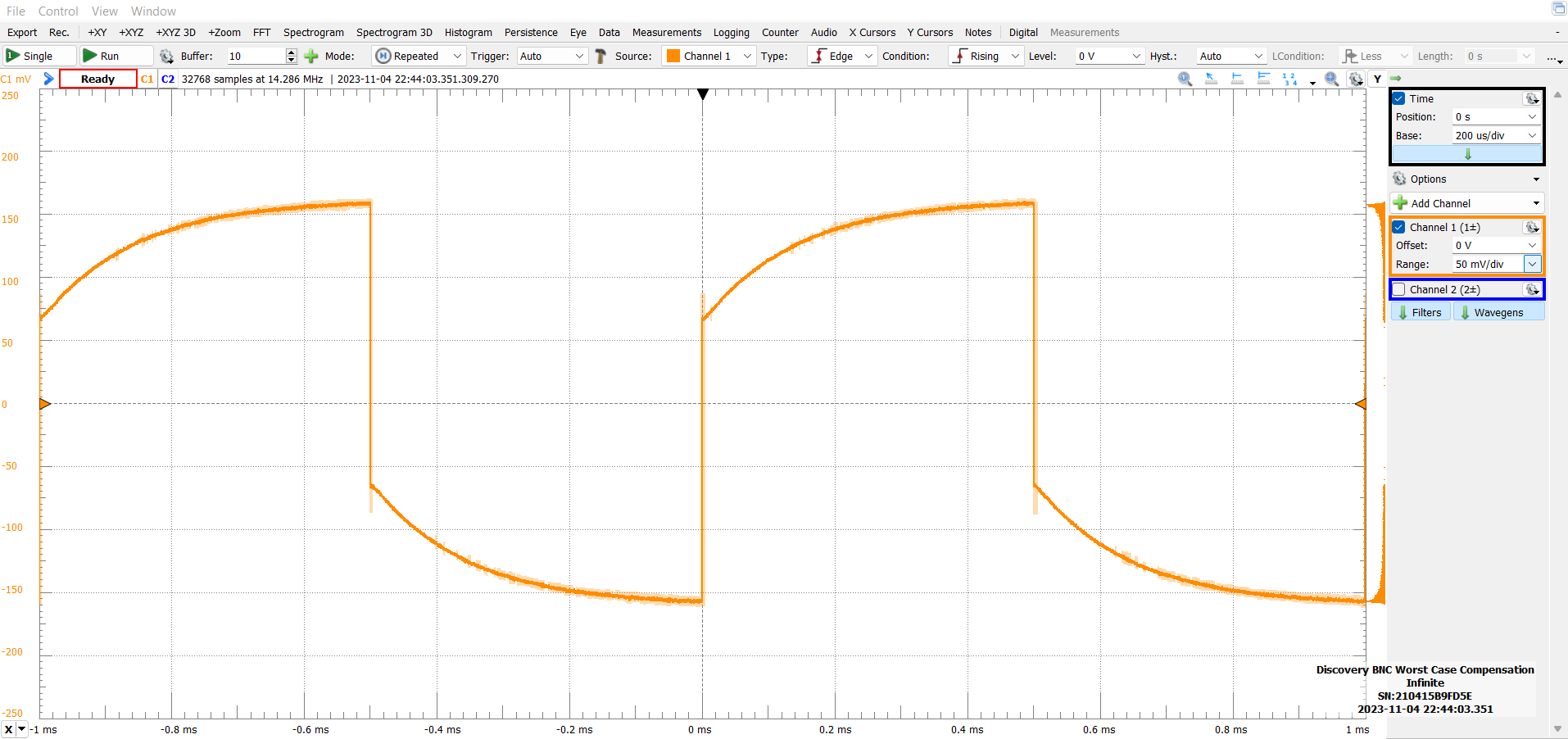When I got my Analog Discovery 3, I made the decision to also purchase the BNC adapter board.
Trying it out with some OWON scope probes I got from Amazon, it unfortunately didn’t cut the mustard.

This was the most square I could get by twiddling with the compensation adjustment.
To prove that I haven’t goofed it somehow, this is at the opposite end of the compensation range:

This waveform ain’t even square at this point.
What is probe compensation?
There are many great articles out there on the internet explaining what probe compensation is and how it’s implemented, but the gist is this:
Inside your typical 10x scope probe, there is an embedded 9MΩ resistor, which forms a 10x divider with the 1MΩ input impedance of the scope.
The problem arises when the capacitance of the scope input is taken into account. Say the scope has an equivalent input capacitance of 15pF. That’s 10kΩ-ish at just 1MHz. Immediately, the x10 scope probe has turned into a x1000 scope probe.
Well, one way to combat this is to add a capacitor in parallel with the 9MΩ series resistance. That way, the two capacitances form their own divider, which should have a stable ratio as frequency varies.
This is known as a frequency compensated divider.
The probe compensation adjustment is there to make sure that the capacitance ratios are correct, since that is much more variable from scope to scope, and even from input to input.
Discovery BNC adapter rough capacitance estimation
A rough order of magnitude estimate using the Saturn PCB Design Toolkit says that for a 4 layer board, we’re looking at 1pF per cm for a 300um wide trace and a 210um thick FR4 dielectric.
These OWON scope probes have a compensation range of 5pF to 35pF. Considering that the Analog Discovery 3 by itself already has 24pF of input capacitance, it is not too far fetched to expect the total capacitance presented at the BNC connector to exceed the 35pF limit.
Custom front end amplifier
I designed a custom front end amplifier to provide a nice low input capcitance which is well within the 5-35pF range. More details on that here